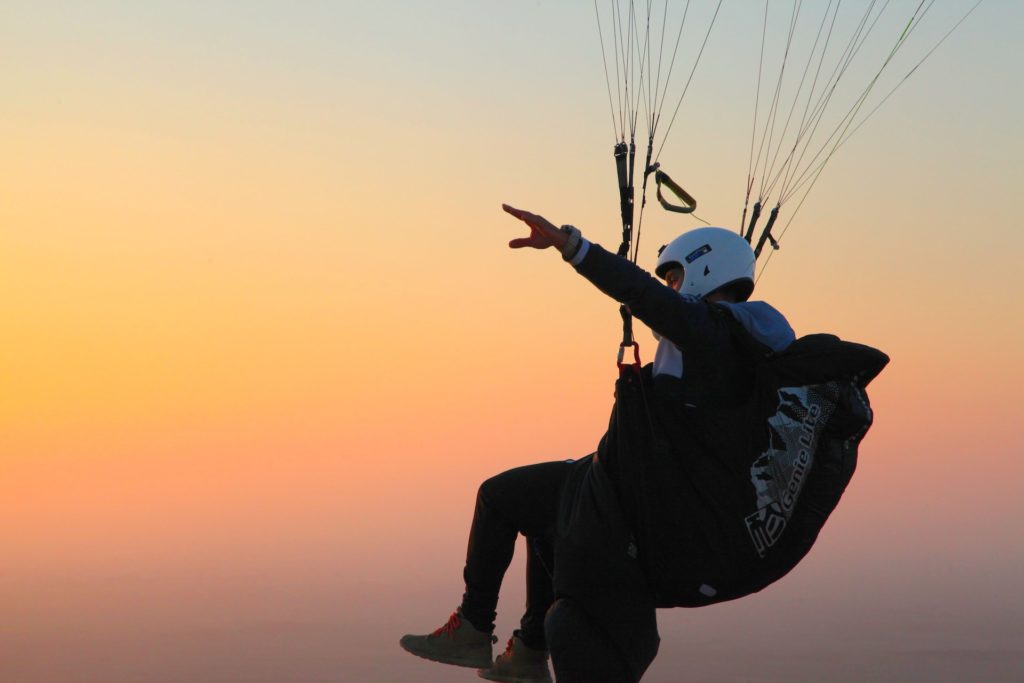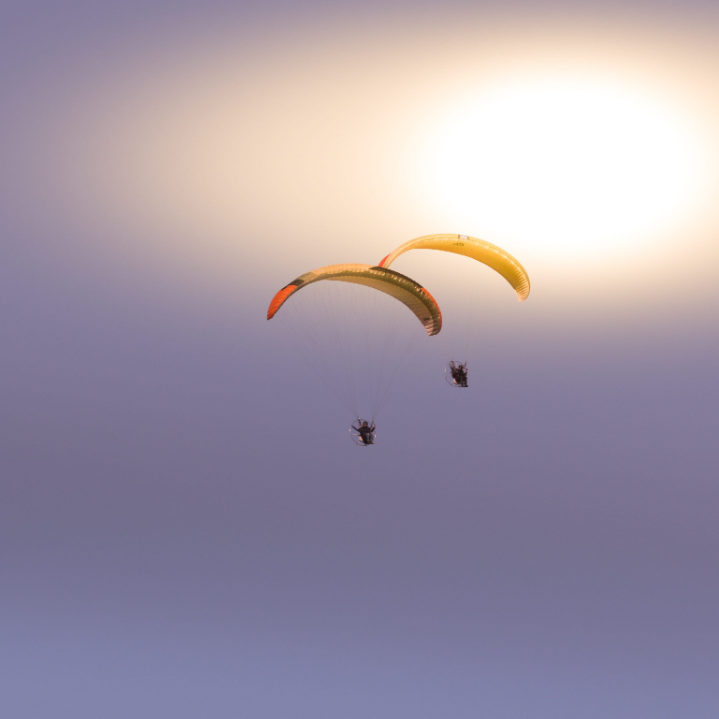Paragliding is a breathtaking adventure that offers the freedom of soaring like a bird. But every flight has to end on the ground, where paragliding landing comes into play. A good one is crucial for the safety and satisfaction of any paragliding experience. This article will delve into the techniques, tips, and preparation needed to master the art of landing.

The approach to landing
The final approach to landing is a critical phase in paragliding. It involves a series of manoeuvres and judgments to touch down safely.
Pilots typically aim to fly into the wind for a proper landing approach. This tactic reduces ground speed and makes the landing more manageable. Another essential technique is the ‘S’ turn. It allows you to lose altitude gradually while staying aligned with the landing area. It also helps you get a feel for the wind conditions close to the ground, allowing you to make final adjustments before touching down.
The approach phase is vital for a safe landing. Familiarity with techniques such as flying into the wind and making ‘S’ turns can significantly ease this process. So, focus on these aspects during your training sessions.
Touchdown techniques
The moment of touchdown is the finale of your airborne journey, and various techniques exist to ensure it goes smoothly.
Flare timing
Flaring involves pulling down the brake toggles sharply to stall the glider momentarily. It reduces your vertical speed and allows for a gentle landing. The timing of the flare is crucial. Do it too early, and you might stall the glider above the ground. Too late, and you risk a hard landing.
The PLF (Parachute Landing Fall)
You should perform a PLF in certain situations, especially when the wind is strong or turbulent. This technique involves tucking your legs and rolling on impact, thus distributing the landing force along your body and minimizing the risk of injury.
All these are critical skills for a safe landing. Practice under professional guidance to hone these techniques.
Landing zone awareness
Awareness of the landing zone is about knowing where it is and its characteristics and potential hazards.
Terrain and obstacles
Always scout the landing area for obstacles like trees, power lines, and buildings. Knowledge of the terrain, including slopes and ground conditions, can aid in a safer landing.
Local weather conditions
Weather conditions can vary drastically, even within a small region. Understand local wind patterns and how they affect the landing area. It will help you adjust your approach and landing techniques accordingly.
As you can see, awareness of the landing zone can mean distinguishing between a safe landing and an accident. Always remember the importance of scouting and understanding local conditions.
Conclusion
A good landing completes a paragliding journey on a high note. Whether you are an experienced pilot or a beginner, these guidelines and techniques can help you touch down safely and confidently. Now that you are equipped with this knowledge, your next landing could be your best one yet.
Do not just read about it — experience it! Book your next paragliding session with a reputable instructor today and elevate your landing skills.
OUR PARTNER

Legalbet.es – provides information about the best legal casino online.
